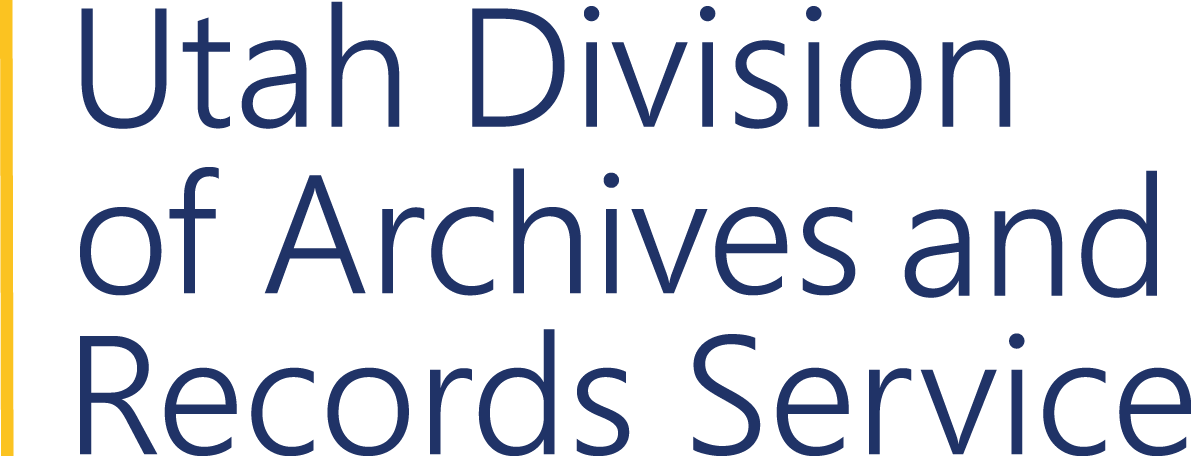MONUMENTAL MINING DISTRICT (UTAH)
Agency History #3122
CREATION
In the 1890s miners flocked to San Juan County in search of gold which had been discovered in traces in the sandbars of the rivers and in the sandstone. Prospectors also discovered petroleum in the area of the San Juan River. Federal law provided that mineral deposits in the public domain were free and open to exploration, and locators of the same had exclusive right of possession (Statutes at Large, Treaties, and Proclamations, of the United States of America, 1872, vol. XVII, chap. 152). In accordance with this law, a group of prospectors gathered in a mining camp on the San Juan River in November 1895 to organize the Monumental Mining District and to establish by-laws for the same. In their words, the district was organized "to further the development of mining in the area and to govern the miners in the district (San Juan County (Utah). County recorder, Miscellaneous records, Utah State Archives, series 23400, Book B, p. 267-268)." The Monumental Mining District encompassed an area extending from Comb Wash near Bluff to the confluence of the San Juan and Colorado Rivers .
In 1897 the Utah Legislature enacted a mining law which made county recorders responsible for recording location notices and other mining related documents. Since this had been a primary function of mining districts, most districts ceased to function as independent agencies after that date. Miners in the Monumental Mining District, however, reconvened in November 1908 in the wake of booming oil speculation in the area. They reviewed and revised the original by-laws, and extended the boundaries of the district to include the area west of Bluff to the Colorado River and south to the Utah state line. Probably, the Monumental District ceased to function before 1912 because the oil boom had subsided by that date.
FUNCTIONS
The original by-laws of the Monumental Mining District specified that the district recorder should record all notices of location upon the books of the district, and provide a certificate of the same with his name and seal. The district recorder was also responsible to record all deeds of mining property sold, and certificates of annual assessment work performed. The recorder was allowed to charge $1.50 for each recording. District by-laws required that each claim be recorded within 60 days after location, and that at the time of recording, each claim was to be marked with a stake or monument of stone at each corner.
In addition to expanding the boundaries of the district, revised by-laws required that each claim be recorded by the county recorder within 30 days. New by-laws established regulations for oil drilling and set up committees to coordinate oil-drilling activities. Monumental miners addressed issues of government allocation of Indian reservation lands and the completion of a federal survey as they affected mining claims. In order to address problems posed by lack of water and the remoteness of the oil fields from markets, Monumental miners determined that road and reservoir construction would be counted as annual assessment labor.
ADMINISTRATION
Originally, an annual meeting of all the miners in the district was set for the first Saturday in January. At each annual meeting the miners were to elect a district recorder and transact district business. When the district reorganized in 1908 mining district recorders were no longer responsible for recording documents, but miners of the district elected a president and secretary. They appointed an arbitration board to resolve disputes and decreed that board decisions were legally binding. They appointed a committee to oversee the construction of a road from Bluff to the oil fields.
In 1897, two years after the organization of the district, the Utah Legislature enacted a mining law which transferred responsibility for recording location notices and other mining documents to county recorders (Laws of Utah, 1897, chapter 36, "Mining Claims"). All books previously kept by district recorders were to be deposited in the office of the county recorder. Miners in the Monumental District reorganized in 1908 for the purpose of managing oil exploration in the area. The San Juan oil boom had subsided by 1912, so the district had probably ceased to function by that year. The Utah Legislature did not completely abolish mining districts as independent governmental agencies until 1933. Revised Statutes published that year state that at the termination of office of any mining district recorder still holding office, the district should be abolished and the office should remain vacant (Revised Statutes of Utah, Annotated, 1933, 55-1-7, Utah State Archives (series 83238)).
| MINING DISTRICT RECORDER or SECRETARY | |
| A.L. Raplee | 1896-ca.1897 |
| W.A. Sumner | 1908-ca.1912 |
COMPILED BY: Rosemary Cundiff, January 2002
SOURCES
Laws of Utah, 1897, Chapter 36, "Mining Claims." Utah State Archives (series 83155).McPherson, Robert S. A History of San Juan County: in the Palms of Time. Utah Historical Society, 1995. Monumental Mining District (Utah), Mining location notices, Utah State Archives (Series 24041). Monumental Mining District (Utah), Mining district minutes, Utah State Archives (Series 24042). San Juan County (Utah). County recorder, Miscellaneous records, Utah State Archives (Series 23400) Book B, p. 267-268. San Juan County (Utah). County recorder, Mining records, Book G, p. 633, Utah State Archives (Series 84250). Statutes at Large, Treaties, and Proclamations, of the United States of America, , 1872, vol. XVII, chap. 152. Published by authority of Congress, Boston: Brown, Little and Company
Page Last Updated July 2, 2003.
